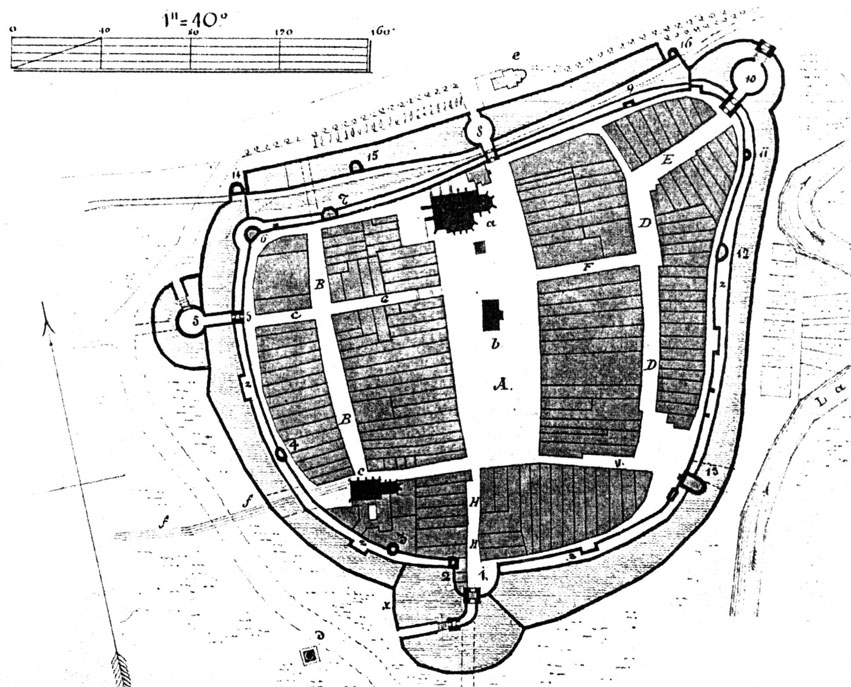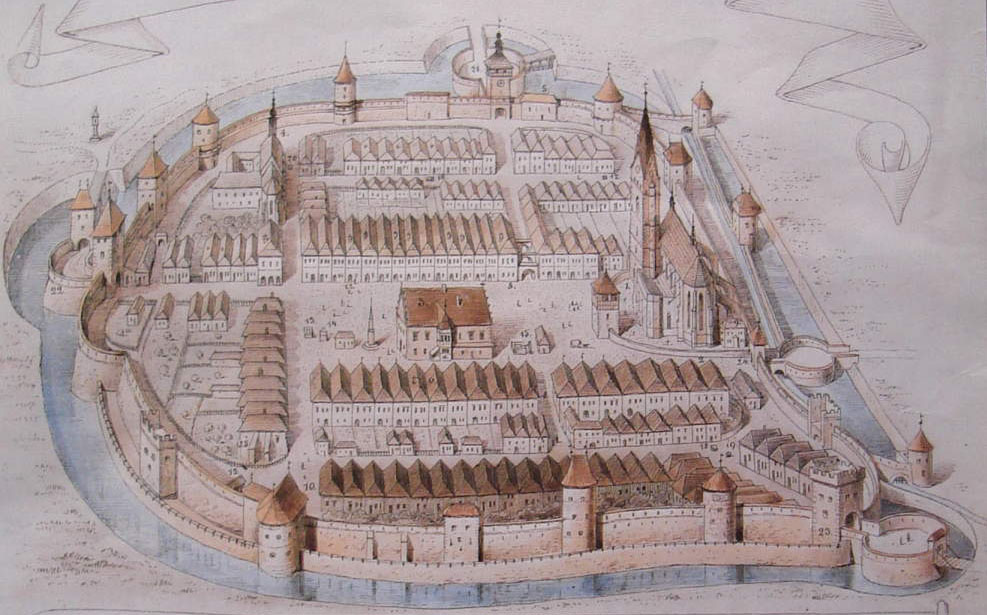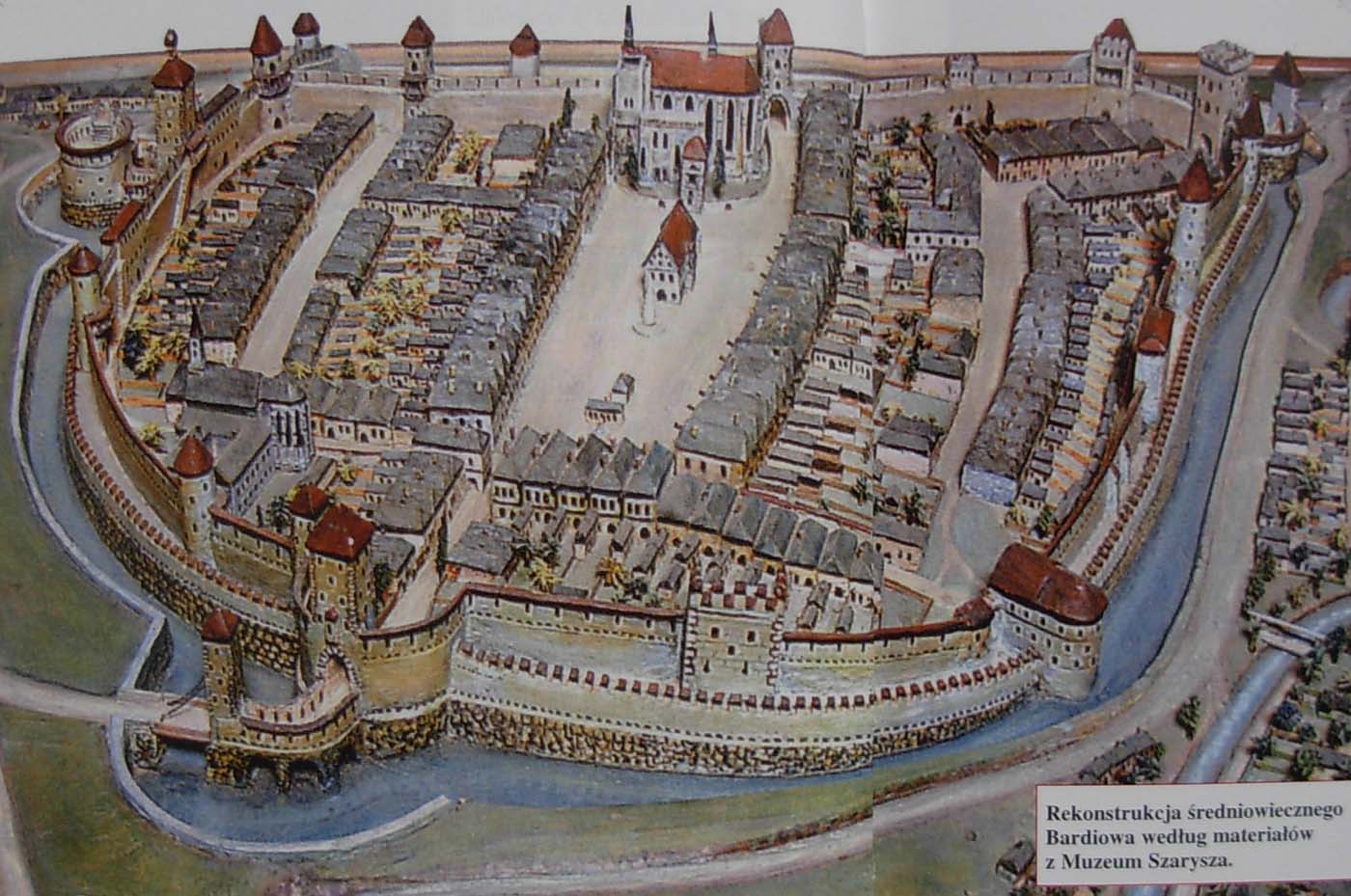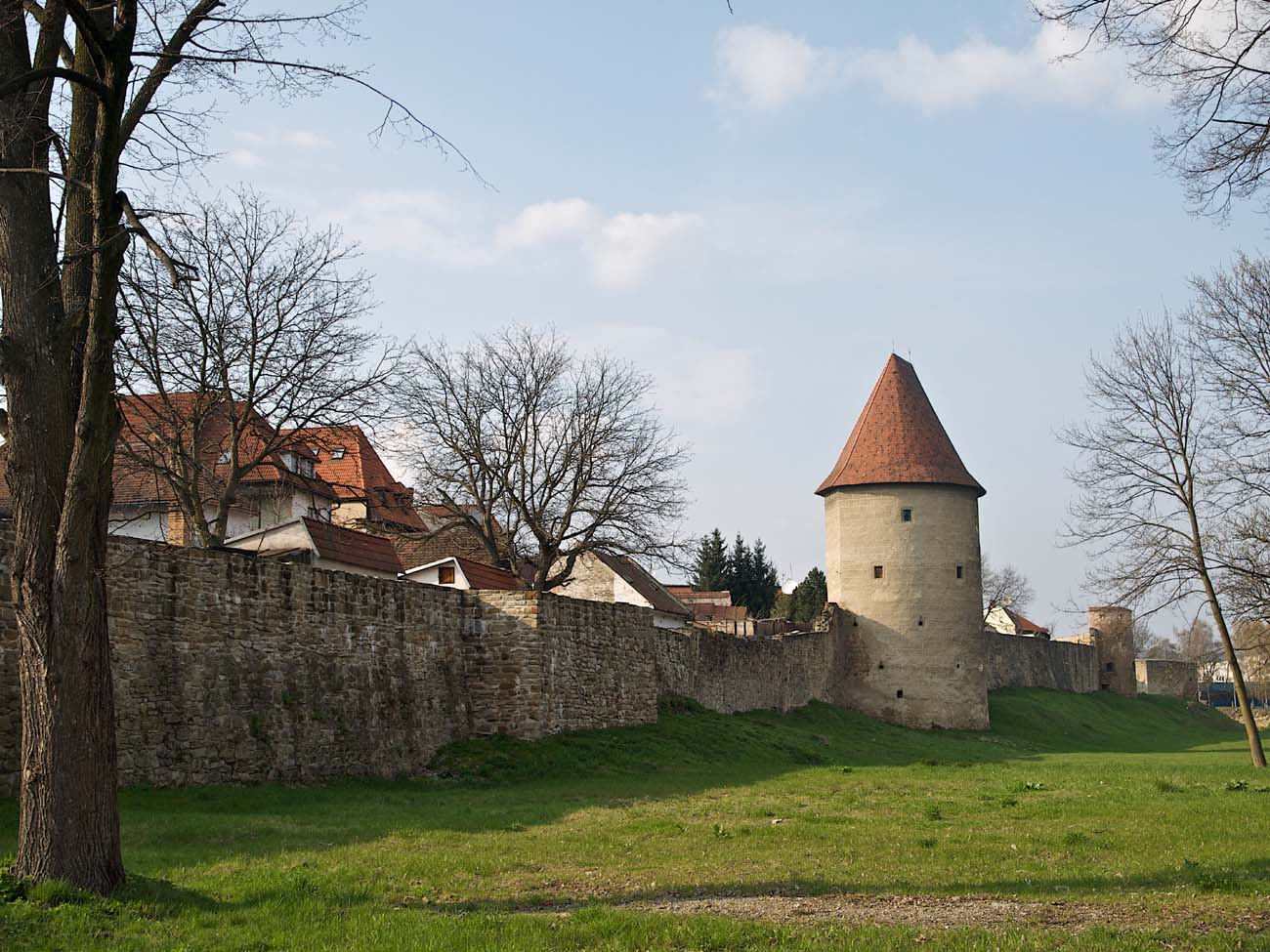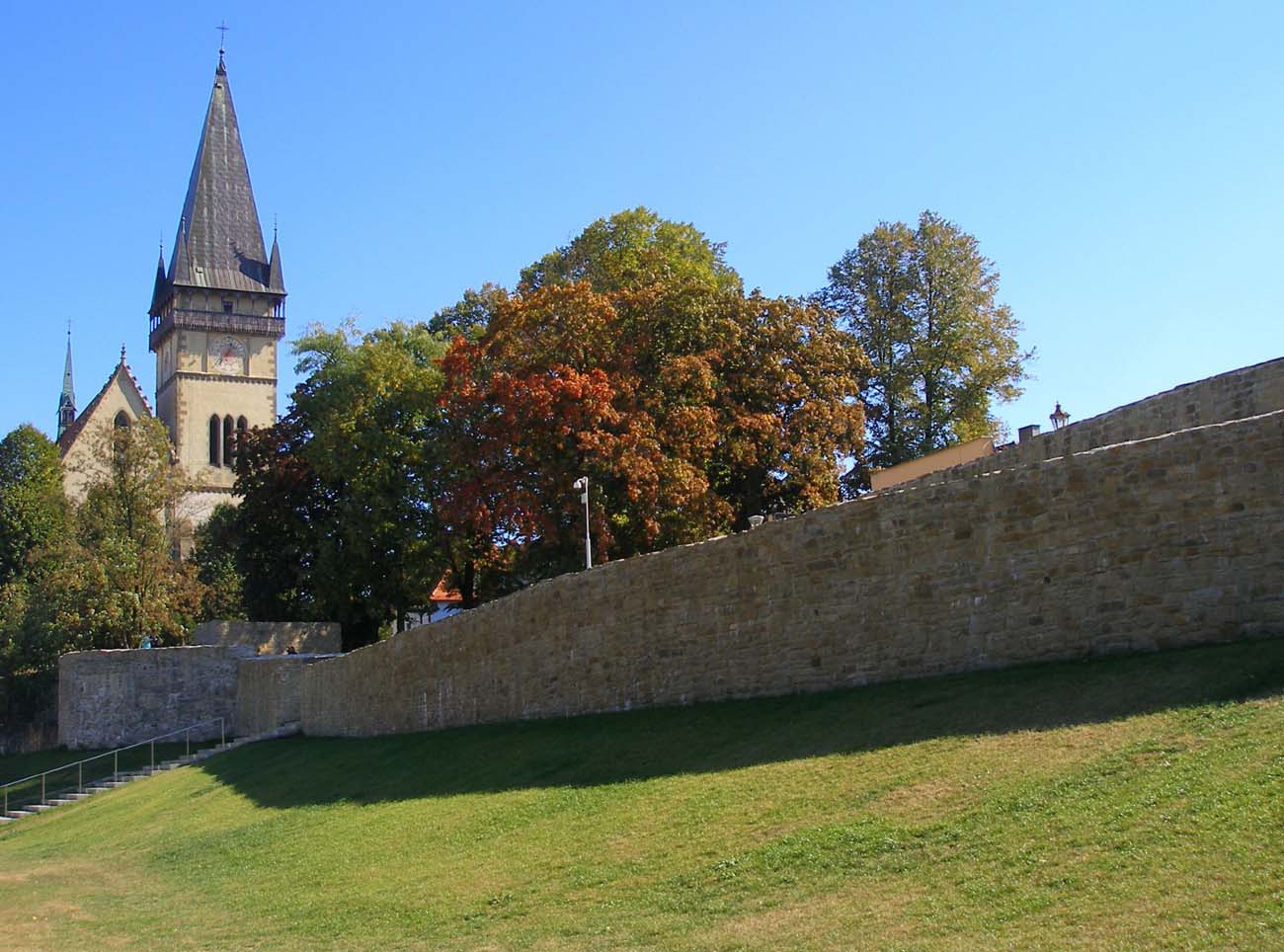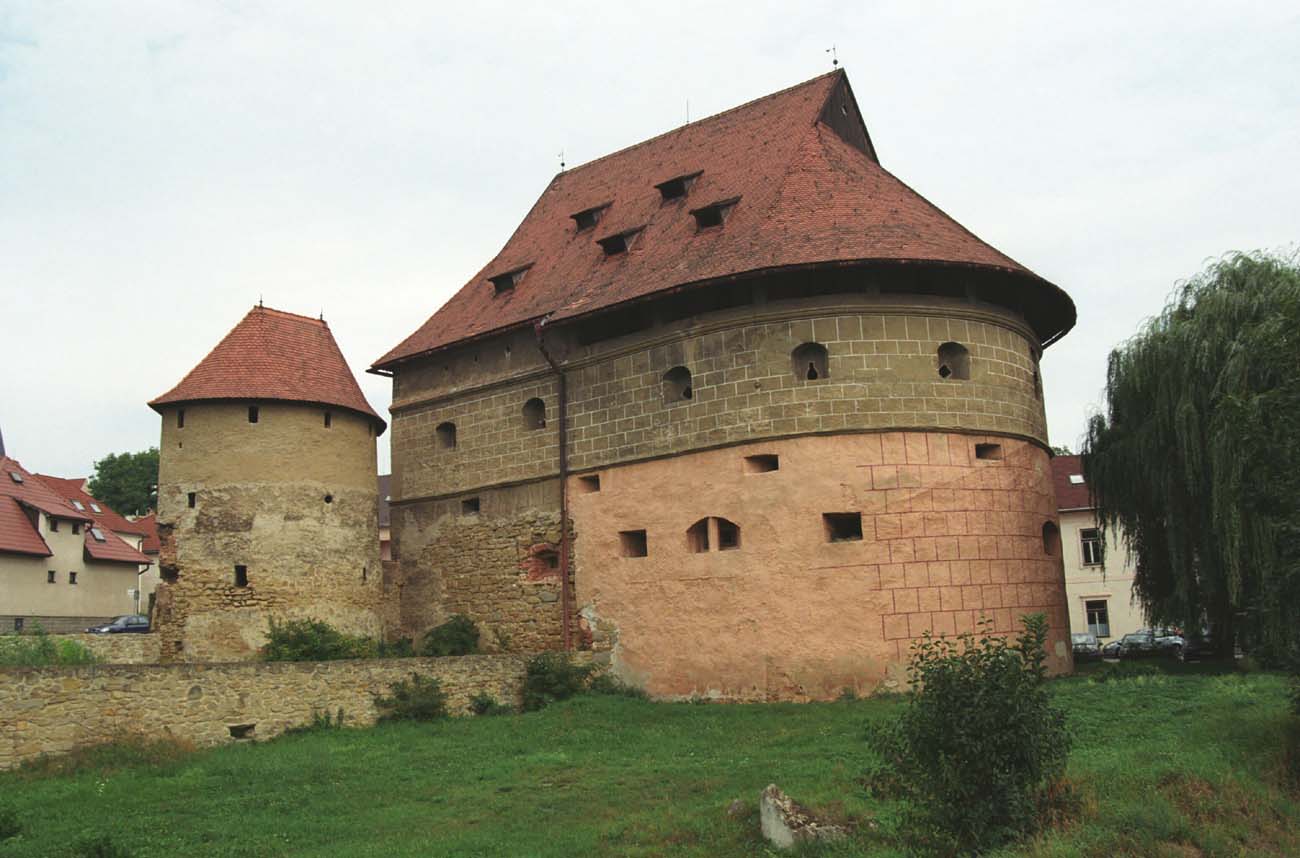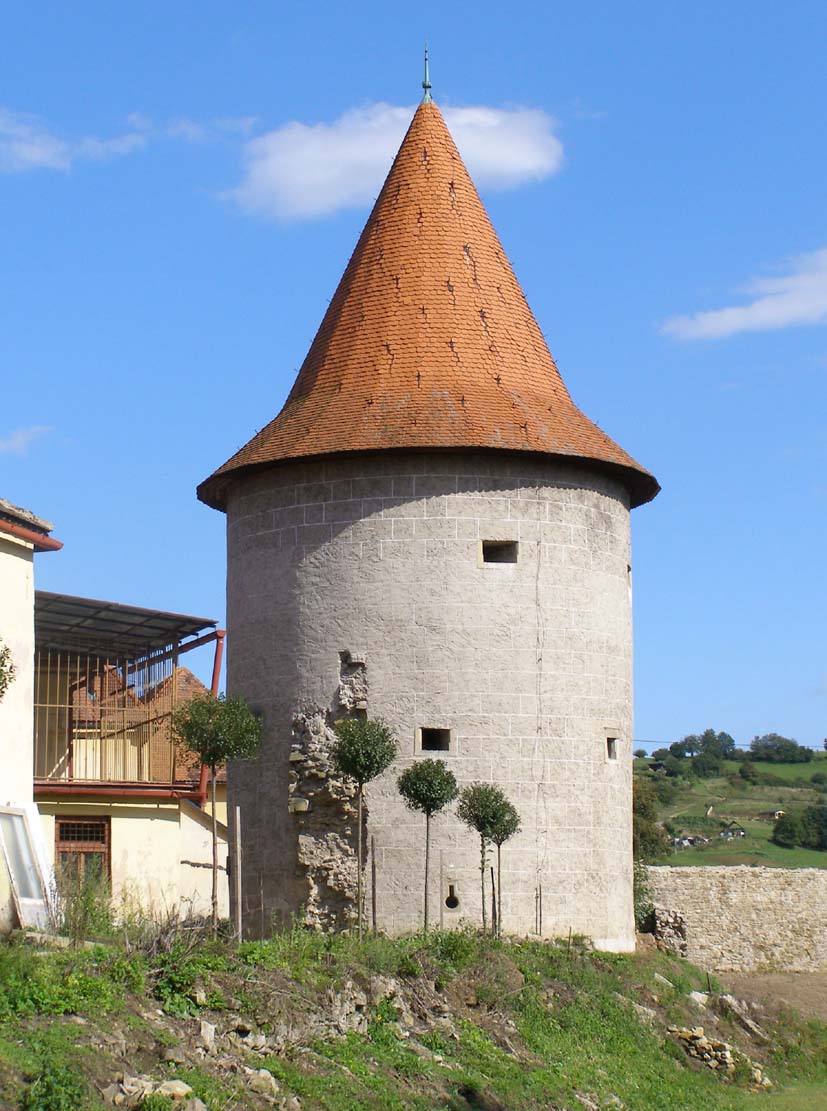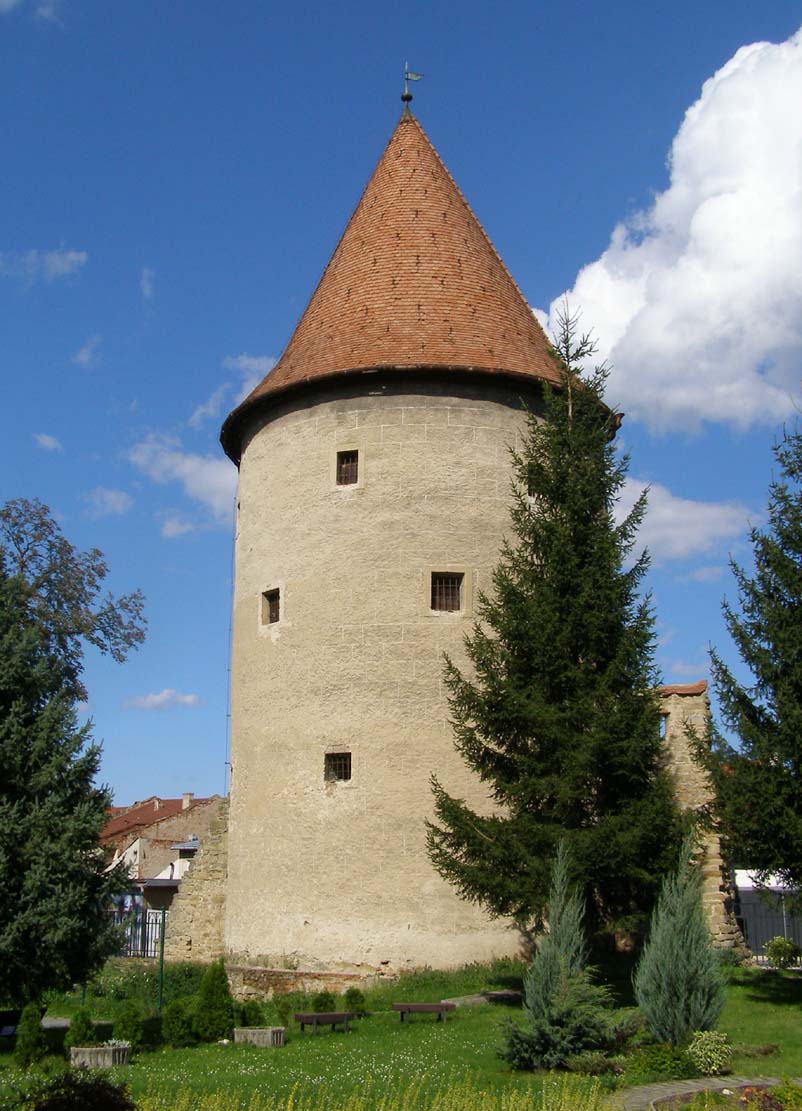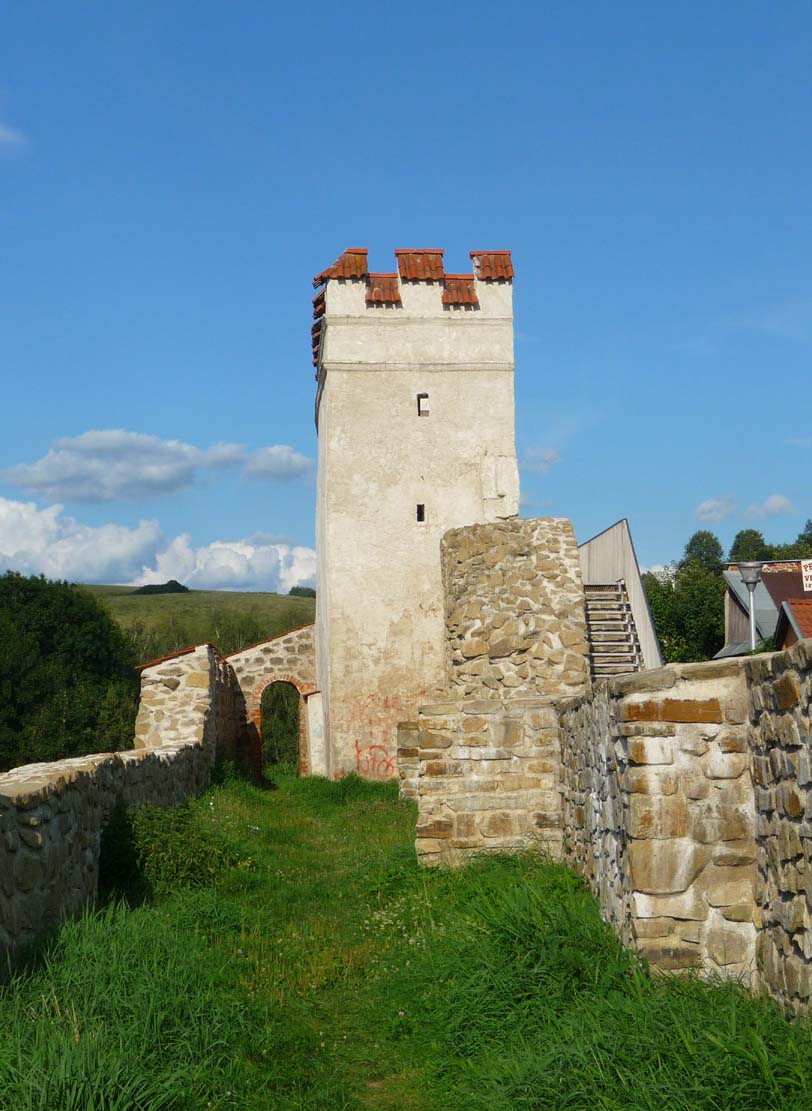History
The oldest written record of Bardejov appeard in 1241 (the Halych-Volyn chronicle). It is assumed that at the end of the fourteenth century, the town already had fortifications of a wooden and earth structure, necessary in connection with the customs chamber existing here, while the construction of stone fortifications, erected in place of older one, began in 1352 on the order of Louis I of Hungary. Already in 1376, there was probably a full defensive circuit (“civitatem nostram muratam Bardfa”), and then Bardejov belonged to the group of free royal towns governed by the Košice and Budín law. It was an important communication junction located close to the border and a toll collection point, through which the main trade routes from Hungary to Poland and Ruthenia ran.
After the completion of the main construction works, in the first half of the fifteenth century, due to the enrichment of the townspeople and the development of firearms, the fortifications were expanded. In the years 1420-1441, the fortifications were renovated, and further works were carried out from 1426 to 1428, when Sigismund of Luxemburg granted the townspeople 386 florins, probably as a support for construction works. In the years 1426, 1427 and 1428, the first mentions of the irrigated town moat appeared, while in the period before 1433 the fortifications were strengthened by adding a second, outer ring of walls. In the years 1438 – 1443 and in the years 1466 – 1467, the town towers were renovated, and more were added to the defensive circuit, already adapted for the use of firearms.
In the first half of the 16th century, the town’s defense system was once again adapted to the requirements of the developing artillery (new loop holes, barbicans in front of gates, deepening of the moat). The modernization of the fortification system was forced mainly by the difficult political situation caused by the military successes of the Ottoman Empire on the southern border of the kingdom of Hungary and the subsequent occupation of its southern territories. The situation was complicated by the internal struggle for power between the Habsburgs and John Zápolya. In 1521, the construction of the tower at the Augustinian monastery was completed, the task of which was probably to strengthen the protection of the municipal water supply network, while in the years 1546–1547 barbicans was erected in front of the gates.
The last, much smaller-scale works related to the expansion and comprehensive renovation of the town fortifications took place in the first half of the 17th century, but then, due to the development of artillery, they began to lose their defensive qualities. This situation continued throughout the 17th century, when East Slovak towns fell into a deep crisis caused by the long-lasting occupation of Lower Hungary by the Turks and feudal anarchy in Hungary. After the defeat of the Turks at Vienna and the stabilization of the political situation in the 18th century, the strategic importance of the town fortifications decreased, and after the Napoleonic Wars their importance completely disappeared.
Architecture
The defensive system of Bardejov consisted of stone defensive walls forming an oval-like shape with an elongation in the north-east direction. They surrounded the town, situated at the fork of two watercourses: the river Topľa flowing in the north, towards which a significant slope was marked from the town side, and the smaller stream Lukavica protecting Bardejov from the east. The latter, near the north-eastern corner of the town, was connected to a mill canal with two mills, running along the northern part of the town and supplying water to the moat. Two main religious buildings of the Bardejov were located close to the fortifications: the parish church of St. Giles on the north side and the Augustinian monastery on the south-west.
The wall, built of sandstone, was provided with a timber porch for the defenders, originally open, later covered with a wooden roof. Its most exposed sections have been reinforced with round and four-sided towers. They were two, three and four-storey with vaults or flat timber ceilings. On each floor there were arrowslits, with time adapted to firearms. Most of towers had names of guilds that defended them and ensured proper maintenance. During the heyday of fortification, in the sixteenth century there were 12 towers and a double ring of walls surrounded by a water-filled moat. On the northern section of the walls, an additional ditch with water ran also between walls.
Three gates led to the town: the north-eastern one called Lower Gate, leading to the trail to Makovica Castle and further to Poland, Upper Gate (Salt Gate) on the southern side, which crossed the main road from Prešov, and the western one called the Italian Gate, which controlled the road to Spiš and Poland. There was also a smaller northern gate called the Water or Small Gate near the church of St. Giles. Initially, the gates were located in four-sided towers with passages in the ground floor. Since the end of the Middle Ages the north-eastern and western gates had attached circular barbicans, connected to the suburbs with drawbridges. A smaller barbican without a drawbridge also existed in front of the aforementioned postern gate. The Upper Gate, instead of a barbican, had an bent neck with an additional four-sided gatehouse providing access to the foregate and preceded by a drawbridge. On the line of the main defensive wall, the curtain was rounded and extended towards the outer wall of the zwinger and equipped with a massive gate tower connected to the mentioned neck. A customs chamber was located at this gate from the beginning of the 15th century.
Current state
show Furriers Tower (Red Tower) on map
bibliography:
Bóna M., Lukáč G., Výsledky výskumu severovýchodnej bašty mestského opevnenia v Bardejove, “Archaeologia historica”, 32/2007.
Mencl V., Stredoveka mesta na Slovensku, Bratislava 1938.
Lexikon stredovekých miest na Slovensku, red. Štefánik M., Lukačka J., Bratislava 2010.
Sroka S.A., Średniowieczny Bardiów i jego kontakty z Małopolską, Kraków 2010.
Sypek A., Sypek.R., Zamki i obiekty warowne Słowacji Wschodniej, Warszawa 2005.

